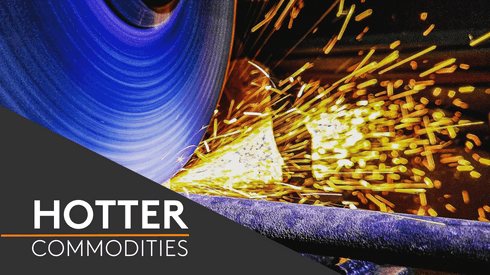- Inaugural MHP price assessment shows strong supply and demand
- Domestic Chinese nickel sulfate prices continue to rise
- Soft demand further pressures premium for international nickel sulfate market
Nickel MHP
Following a successful consultation, and given the increased focus on this growing area of the nickel market, Fastmarkets published its first ever nickel MHP price assessment on October 28.
“Two years ago, people occasionally mentioned MHP, but it wasn’t really known,” one producer source said. “Now it’s all anyone wants to talk about.”
MHP is currently viewed by many in the industry as the most suitable feedstock for nickel sulfate production. Not only does it also contain cobalt and manganese, processing of it is more cost-effective compared with that of class-one nickel.
“With the growing supply of MHP, there is no incentive to produce [nickel sulfate] from class one, not unless we see major price changes,” one consumer source said.
Fastmarkets assessed the nickel mixed hydroxide precipitate payable indicator, % London Metal Exchange, CIF China, Japan and South Korea at 75-78% on Friday October 28.
And Fastmarkets assessed the nickel mixed-hydroxide-precipitate expressed price, CIF China, Japan and South Korea at $17,005-17,685 per tonne, based on the previous month’s LME official cash monthly average.
These payable deals are notably higher than a month earlier, when participants were reporting payables of around 70%.
One deal and multiple offers were reported within that payable range, with the majority of participants indicating the range as reflective of the market.
Both supply and demand for MHP was reportedly strong in the international market, with production steadily ramping up in Southeast Asia. Market participants pointed out, however, that the ‘wet season’ is set to commence in November, which could disrupt mined supply and production.
For now, the impact of the weather is thought to have been limited, with MHP conversion capacity in China and other countries ramping up.
With increased attention on the MHP market, new supply sources and consumers are emerging outside of Asia. Producer Brazilian Nickel, for example, announced it had selected Techmet-Mercuria as its marketing agent for its MHP production from Brazil.
As a result of the growing demand, some participants have now been pricing and offering MHP at payables of around 80%. But the absence of confirmed liquidity at these levels, and a view among other participants that this is not reflective of the market, have capped any price increase for now. Fastmarkets will look to test these levels in future pricing sessions.
Chinese domestic nickel sulfate
Strong demand for MHP is also evident in its downstream nickel sulfate prices, which have been on the rise for a second consecutive week.
The nickel sulfate price in China narrowed upward in the week to Friday October 28 on the back of a supply-demand deficit, Fastmarkets understands.
Fastmarkets’ weekly price assessment for nickel sulfate min 21%, max 22.5%; cobalt 10ppm max, exw China was 40,000-41,000 yuan ($5,511-5,649) per tonne on Friday, up by 500 yuan per tonne from 39,500-41,000 yuan per tonne on October 21.
Sources attributed the increase partly to the booming demand from precursors during what is the typical peak season for consumption.
“It’s that kind of peak season in Q4 [when you] see downstream consumption increasing,” a nickel sulfate trader in Shanghai said.
Multiple sources also told Fastmarkets that they were out of materials, citing limited refining capacity for raw-material MHP, which is also aiding the uptrend in MHP and nickel sulfate prices.
“I didn’t get to do spot trades this week due to a lack of materials, but the market is definitely pushed higher now,” a second Chinese nickel sulfate trader said.
But the demand for MHP could have been nearing a peak once MHP payables broke the psychological level of 80%, other sources said.
“I don’t see much point of buying MHP payable at 80%, given nickel matte is still amply supplied,” a nickel sulfate buyer in Shanghai said.
Nickel matte payable is reportedly at 84-85%, by comparison.
International nickel sulfate
The international nickel sulfate premium has bucked this upward trend in the nickel market, showing further weakness as a result of poor demand on a spot basis.
Fastmarkets assessed the nickel sulfate premium, cif China, Japan and Korea at $1,500 per tonne on October 28, moving $100 per tonne lower versus the previous figure on October 21 as a result of decreasing nickel prices in Asia pressuring the market.
The nickel sulfate premium is now at its lowest since Fastmarkets began assessing the market in April 2021.
The market is reportedly well covered on a long-term contractual basis, meaning there is limited visible spot activity. Participants remain bullish for the future of the market though, citing strong demand forecasts for nickel sulfate.
The all-in nickel sulfate price did move higher though, despite the decrease in the premium level, following an uplift in underlying LME nickel prices.
Fastmarkets assessed the nickel sulfate, cif China, Japan, Korea price at $5,252 per tonne on Friday, up from $5,186 per tonne the previous week.
To keep up to date with the latest news and insights in the nickel market, visit our dedicated nickel page.





